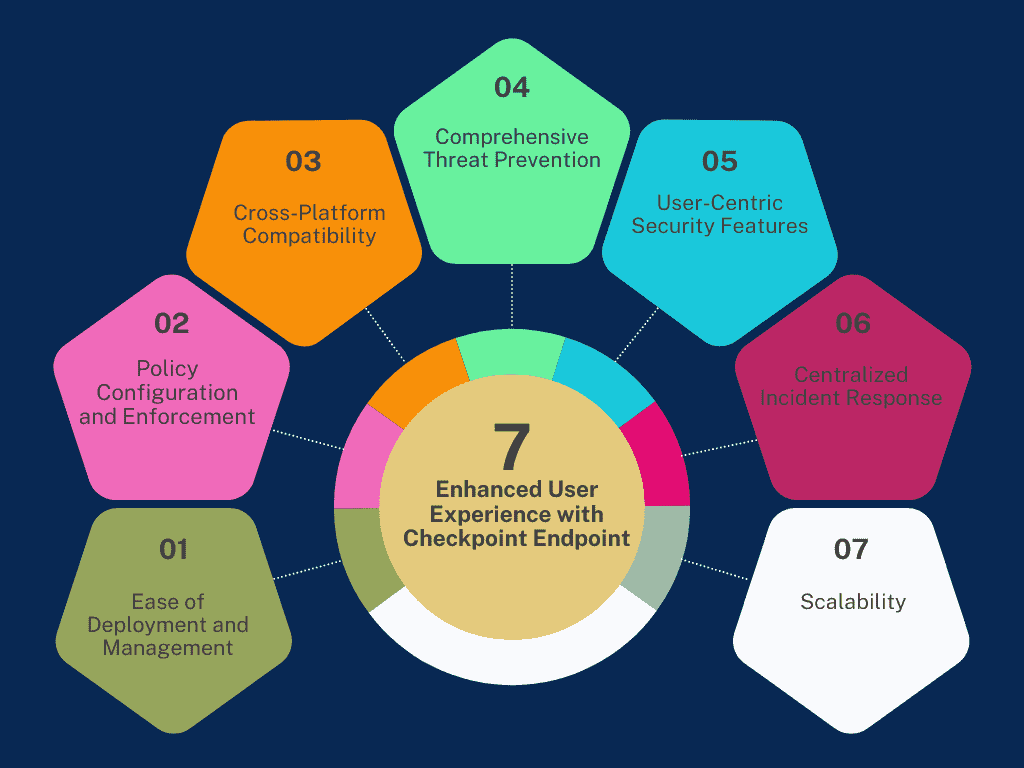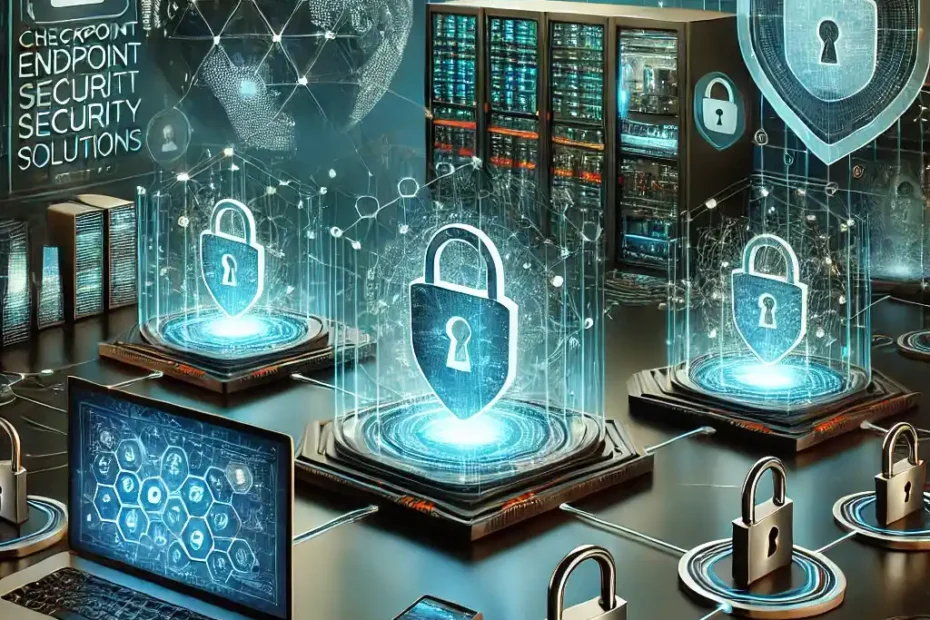Introduction to Endpoint Security
What is Endpoint Security?
Endpoint security refers to the process of securing endpoints like computers, mobile devices, tablets, and other devices that connect to a network. As cyber threats continue to evolve, securing these entry points has become vital for businesses. Endpoints are vulnerable targets for hackers because they are commonly used as gateways to an organization’s data.
Importance of Endpoint Security in Modern Enterprises
In today’s digital landscape, enterprises rely heavily on network connectivity, making endpoint security crucial. Without the right endpoint security measures, organizations risk data breaches, malware attacks, and unauthorized access, leading to significant financial and reputational damage.
The Evolution of Threat Landscape: Why Traditional Security is No Longer Enough
The modern cyber threat landscape is rapidly changing. Traditional security methods, such as firewalls and antivirus, no longer provide adequate protection. Hackers have developed sophisticated techniques like ransomware, phishing, and advanced persistent threats (APTs) that bypass outdated systems. Modern endpoint security solutions offer advanced features like threat detection, AI-driven defenses, and comprehensive monitoring, which are critical in countering today’s cyber threats.
Overview of Checkpoint Endpoint Security
What is Checkpoint Endpoint?
Checkpoint Endpoint is a comprehensive security solution designed to protect endpoints from advanced threats. This solution provides features like threat prevention, data protection, and threat detection, ensuring devices and networks remain secure against various cyber attacks.
Key Features of Checkpoint Endpoint Security
Checkpoint Endpoint offers a wide array of advanced features, such as:
- Threat Prevention: Detects and blocks malware, ransomware, and phishing attacks.
- Data Protection: Encrypts sensitive data to prevent unauthorized access.
- Threat Detection: Uses AI to identify suspicious activities and threats in real-time.
Comparison with Other Leading Endpoint Security Solutions
While many competitors offer endpoint security, Checkpoint stands out due to its integration with advanced threat intelligence and seamless management. Compared to other solutions like Symantec or McAfee, Checkpoint focuses more on proactive threat prevention, making it a top choice for organizations looking for comprehensive protection.
Challenges in Endpoint Security

1. Increasing Complexity of Cyber Threats
As cyber threats become more sophisticated, hackers develop new forms of malware, phishing tactics, and ransomware schemes that evade traditional detection methods. Endpoint security solutions must continually evolve to detect and mitigate these emerging threats, often at a faster pace than defenses can adapt.
2. BYOD (Bring Your Own Device) and Remote Workforce Security Concerns
The growing trend of remote work and BYOD policies creates vulnerabilities. Personal devices are not always subject to strict company security protocols, making them an easier target for cyberattacks. Moreover, these devices connect from various locations, increasing the attack surface for hackers to exploit.
3. Gaps in Traditional Security Solutions
Traditional security methods often prioritize perimeter defenses, leaving endpoints (such as laptops, mobile devices, and IoT devices) unprotected. These endpoints are especially vulnerable as they frequently operate outside the secured perimeter, exposing them to a wide array of threats.
4. Lack of Visibility Across Endpoints
One of the major challenges in endpoint security is the lack of visibility into all devices connected to the network. Without a comprehensive view, it is difficult for security teams to identify and respond to potential threats in real-time, especially when dealing with a diverse range of devices.
5. Managing Endpoint Diversity
With the proliferation of different types of devices (desktops, smartphones, tablets, IoT), each with unique operating systems and applications, managing endpoint security becomes a complex task. This diversity increases the likelihood of vulnerabilities if not adequately addressed, as one security solution may not fit all device types.
6. Difficulty in Patching and Updating Endpoints
Many organizations struggle to keep endpoints updated with the latest security patches. Unpatched systems are highly vulnerable to attacks that exploit known vulnerabilities. Delayed or incomplete patching processes can leave significant gaps in security, putting the entire network at risk.
7. Resource Constraints
Implementing robust endpoint security solutions often requires significant financial and technical resources. Small to medium-sized enterprises (SMEs), in particular, may lack the budget and expertise to deploy advanced solutions, leaving them more susceptible to attacks.
8. Human Error and Lack of Cybersecurity Awareness
A significant portion of endpoint security breaches stems from human error, such as employees falling for phishing scams, downloading malicious attachments, or failing to follow security protocols. A lack of adequate cybersecurity training increases the likelihood of these vulnerabilities being exploited.
These challenges highlight the need for a comprehensive, adaptable, and proactive approach to endpoint security that goes beyond traditional defenses
The Future of Threat Prevention with Checkpoint

1 AI-Powered Threat Detection and Response
AI plays a crucial role in the future of threat detection. Checkpoint Endpoint leverages machine learning to analyze behavioral patterns, detect anomalies, and stop threats before they cause harm. AI’s predictive capabilities mean faster response times and fewer false positives.
2 Zero Trust Architecture and Endpoint Security
Zero Trust is an emerging security model where no device or user is trusted by default, even inside the network perimeter. With Checkpoint, this architecture ensures that each access request is verified, reducing the risk of insider threats or compromised endpoints.
3 Advanced Anti-Ransomware and Malware Protection
Ransomware and malware are some of the most dangerous threats to enterprises today. Checkpoint Endpoint’s advanced anti-malware features proactively prevent these attacks, providing an added layer of defense that is essential in today’s threat environment.
4 Securing Hybrid and Remote Work Environments
As businesses move towards hybrid work models, securing remote endpoints has become a priority. Checkpoint’s endpoint security solutions provide remote workers with the same level of protection as in-office employees, ensuring secure access to sensitive information regardless of location.
Checkpoint Endpoint Security’s Key Technologies

1Behavioral Threat Detection and Sandboxing
Checkpoint’s behavioral threat detection monitors user actions to detect unusual patterns that may indicate an attack. Sandboxing isolates suspicious files in a safe environment to evaluate whether they contain malicious code before allowing them access to the network.
2 Autonomous Threat Detection with Deep Learning
Deep learning algorithms autonomously scan and analyze threats, making Checkpoint Endpoint smarter and faster at detecting new or evolving attack vectors.
3 Integration with Network Security and Threat Intelligence
Checkpoint’s solution integrates seamlessly with the broader Checkpoint Infinity architecture, allowing for shared threat intelligence across the network. This integration ensures that endpoints benefit from network-wide security protocols and real-time updates.
4 Continuous Endpoint Monitoring and Incident Response
Continuous monitoring of endpoints enables rapid response to emerging threats. Checkpoint’s incident response tools ensure that any breach or attack is contained quickly to minimize damage.
Enhanced User Experience with Checkpoint Endpoint

1. Ease of Deployment and Management
Checkpoint Endpoint is built to streamline the deployment process, allowing organizations to implement security solutions quickly without causing downtime or disruptions to ongoing business operations. The centralized management system simplifies administration, letting IT teams configure, monitor, and update security policies across all endpoints efficiently. This reduces the time and resources needed to manage endpoint security, even in larger enterprises.
2. Policy Configuration and Enforcement
Administrators using Checkpoint Endpoint benefit from its robust policy configuration and enforcement capabilities. With an intuitive interface, security teams can easily create, adjust, and apply security policies tailored to the organization’s specific needs. Whether devices are on-site or remote, Checkpoint ensures that all endpoints adhere to strict security protocols. This feature is especially useful in maintaining security compliance across a distributed workforce, ensuring consistent protection no matter where employees are working.
3. Cross-Platform Compatibility (Windows, Mac, Linux, Mobile Devices)
Checkpoint Endpoint offers cross-platform compatibility, supporting a wide range of devices and operating systems, including Windows, macOS, Linux, and mobile platforms like iOS and Android. This flexibility makes it an ideal choice for organizations with diverse IT infrastructures, ensuring that security protocols are uniformly applied, regardless of the device or operating system in use. Cross-platform support enhances the user experience by providing seamless protection across all endpoint environments.
4. Comprehensive Threat Prevention
Checkpoint Endpoint incorporates advanced threat prevention mechanisms that go beyond traditional antivirus and malware detection. Its multi-layered protection strategy includes features like anti-ransomware, file encryption, and data loss prevention (DLP), ensuring endpoints are protected from a variety of modern threats. This comprehensive protection allows users to work without fear of data breaches or other cyberattacks, enhancing overall productivity and security.
5. User-Centric Security Features
Checkpoint focuses on making endpoint security user-friendly by offering features that are non-intrusive yet effective. Automatic updates, low resource consumption, and seamless integration with existing systems mean users experience minimal disruption in their daily activities while enjoying robust protection. This user-first design helps to strike a balance between security and usability.
6. Centralized Incident Response
In case of a security breach or incident, Checkpoint Endpoint provides centralized tools for quick response and remediation. Administrators can remotely isolate infected devices, investigate the root cause, and take action to prevent the spread of malware. This quick response minimizes downtime for end users, ensuring swift recovery from potential security incidents.
7. Scalability
Whether an organization has a handful of devices or thousands, Checkpoint Endpoint scales easily. Its cloud-based management allows security to grow alongside the company, handling an increasing number of endpoints without sacrificing performance. This scalability provides future-proof protection, making it a long-term solution for enterprises of all sizes.
Checkpoint Endpoint delivers a user-friendly, flexible, and comprehensive security solution designed to meet the needs of modern organizations. By focusing on ease of management, cross-platform support, and strong policy enforcement, it helps ensure both security and efficiency in an increasingly complex IT environments
Differences between traditional security solutions and Checkpoint Endpoint Security
| Aspect | Traditional Security Solutions | Checkpoint Endpoint Security |
|---|---|---|
| Threat Detection Method | Relies mainly on signature-based detection, identifying threats based on known malware signatures. | Utilizes AI-powered behavioral analysis and machine learning to detect both known and unknown threats, including zero-day attacks. |
| Response Time | Typically slower, as it requires manual updates to recognize new malware signatures. | Provides real-time autonomous threat detection and response, allowing for faster action against emerging threats. |
| Protection Against Zero-Day Threats | Limited capability to defend against zero-day threats or unknown vulnerabilities. | Effectively defends against zero-day attacks with deep learning and proactive threat intelligence. |
| Remote Workforce Security | Often struggles to provide consistent protection for remote or hybrid workforces. | Seamlessly extends security to remote workers, providing the same protection regardless of location or device. |
| Integration with Threat Intelligence | Minimal or limited integration with broader threat intelligence networks. | Fully integrated with Checkpoint Infinity’s global threat intelligence, providing real-time updates and data sharing across the entire network. |
FAQs
1. How is Checkpoint Endpoint different from traditional security?
Checkpoint Endpoint uses AI and machine learning to detect threats in real-time, including zero-day attacks. Traditional security relies on signature-based detection, which is slower and less effective against new, unknown threats.
2. Does Checkpoint protect remote workers?
Yes, Checkpoint provides robust security for remote and hybrid workers by encrypting data, monitoring endpoint activity, and ensuring secure access to company networks, regardless of location.
3. Can Checkpoint prevent ransomware?
Checkpoint’s advanced anti-ransomware feature detects ransomware behavior and stops attacks before files are encrypted. It also helps recover data if needed, ensuring minimal disruption.
4. Is Checkpoint compatible with all devices?
Checkpoint Endpoint is cross-platform compatible, supporting Windows, macOS, Linux, and mobile devices, ensuring seamless protection across all devices in the organization.
5. How does Checkpoint integrate with other tools?
Checkpoint integrates with its Infinity threat intelligence platform and other security tools, sharing real-time threat data for comprehensive and proactive defense across the network.
Conclusion
Checkpoint Endpoint Security offers a future-proof solution for enterprises facing the growing challenges of cyber threats. Its advanced technologies, integration with threat intelligence, and support for remote work environments make it a top choice for businesses aiming to secure their endpoints in an increasingly complex digital world
